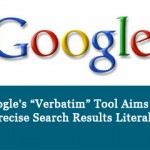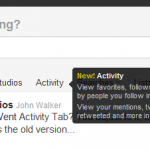 Redmond, Washington — In a latest move to differentiate itself from its arch rival Google and carve out a decent chunk of the search market, software monopolists Microsoft’s Bing has unveiled the first dynamic search page, backed by a looping video of a white-lined leaf frog padding along a branch in Manu National Park, Peru, as you make your query.
Redmond, Washington — In a latest move to differentiate itself from its arch rival Google and carve out a decent chunk of the search market, software monopolists Microsoft’s Bing has unveiled the first dynamic search page, backed by a looping video of a white-lined leaf frog padding along a branch in Manu National Park, Peru, as you make your query.
Moving forward, Bing users in the United Kingdom and Australia will be able to view some movement on their main search page at www.bing.co.uk, an animated tree frog climbing a branch and builds on Bing’s already well-received graphical search pages.
Careful not to touch it though, because “the prettiest frogs are often the deadliest,” the search engine informs us in an overlay. The hot-spots are still in place although, obviously, they are all themed around videos to mark the event.

Surely, it is nice to start your day with some random trivia. The page also consists of an interactive and informative twist to the famous Google doodle, which alters the Google logo for a day. If you mouse over the picture, hotspots reveal information about our amphibious friends, warning that the prettiest frogs are often the deadliest, and there is a video on diamagnetism, which causes frogs to fly when subjected to strong magnetic fields.
Making search pages more attractive is clearly at the forefront of the major players’ minds with Google also toiling hard on jazzing up its traditional page.
Interestingly, Google has been doing it for a while, commissioning special versions of its logo on the search home page that are themed to something happening that day, and Halloween brought a time-lapse video of pumpkin carving. In addition to that, many honor innovators of science and technology, such as Marie Curie, steam-powered badass Richard Trevithick, and Edmond Halley of Halley’s Comet fame.
The latest animated play is just to add a little bit of life to the already vibrant Bing homepage and get users more interested in the search engine. We found the little info bubbles with links to more detailed articles and videos particularly insightful, and expect to see it rolled out in other countries soon.


